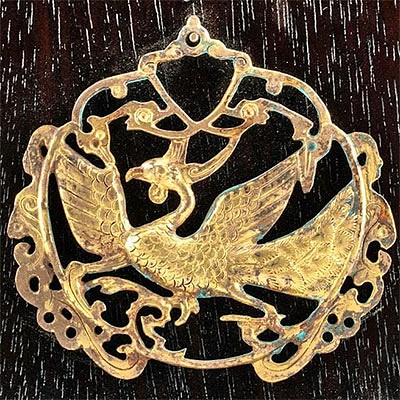Ancient Anatolian Copper Figure Standing Bull
Lot 46
About Seller
Artemis Fine Arts
686 S Taylor Ave, Ste 106
Louisville, CO 80027
United States
Selling antiquities, ancient and ethnographic art online since 1993, Artemis Gallery specializes in Classical Antiquities (Egyptian, Greek, Roman, Near Eastern), Asian, Pre-Columbian, African / Tribal / Oceanographic art. Our extensive inventory includes pottery, stone, metal, wood, glass and textil...Read more
Categories
Estimate:
$1,200 - $1,800
Absentee vs Live bid
Two ways to bid:
- Leave a max absentee bid and the platform will bid on your behalf up to your maximum bid during the live auction.
- Bid live during the auction and your bids will be submitted real-time to the auctioneer.
Bid Increments
| Price | Bid Increment |
|---|---|
| $0 | $25 |
| $300 | $50 |
| $1,000 | $100 |
| $2,000 | $250 |
| $5,000 | $500 |
| $10,000 | $1,000 |
| $20,000 | $2,500 |
| $50,000 | $5,000 |
| $100,000 | $10,000 |
| $200,000 | $20,000 |
About Auction
By Artemis Fine Arts
Jun 17, 2021
Set Reminder
2021-06-17 10:00:00
2021-06-17 10:00:00
America/New_York
Bidsquare
Bidsquare : Ancient & Ethnographic Art Through The Ages
https://www.bidsquare.com/auctions/artemis-gallery/ancient-ethnographic-art-through-the-ages-7094
Ancient art from Egypt, Greece, Italy and the Near East, as well as Asian, Fossils, Pre-Columbian, Native American, African / Tribal / Oceanic, Fine art, and much more! All categories, all price ranges... all legally acquired and guaranteed to be as described or your money back. Artemis Fine Arts info@artemisgallery.com
Ancient art from Egypt, Greece, Italy and the Near East, as well as Asian, Fossils, Pre-Columbian, Native American, African / Tribal / Oceanic, Fine art, and much more! All categories, all price ranges... all legally acquired and guaranteed to be as described or your money back. Artemis Fine Arts info@artemisgallery.com
- Lot Description
Ancient Near East, central Anatolia (modern-day Turkey), ca. late 2nd to early 1st millennium BCE. A cast-copper figurine of a bull standing atop a quartet of delineated legs and gently flared hooves. The slender body features a perky tail along the butt end and a slender neck projecting from between the shoulders. Puffy ovoid eyes, a narrow snout with flared nostrils and a thin mouth, and a pair of cupped ears comprise the stylized zoomorphic countenance, and surmounting the head is a grand pair of curved, crescent-shaped horns. Lustrous layers of brown and green patina have developed across the creature and imbue it with an attractive presentation evocative of the ancient Near East. Size: 4.375" L x 1.7" W x 3.6" H (11.1 cm x 4.3 cm x 9.1 cm)
Bucrania - bull heads - were incredibly popular images throughout the ancient world that celebrated the ritual religious practice of sacrificing bulls as well as the symbolism of the bull as a powerful, virile animal. In the eastern Mediterranean and the Levant, the bull was highly symbolic of the god of fertility from at least the 3rd millennium BCE, and bucrania appear on documents and models of sanctuaries.
Provenance: ex-private collection, acquired via descent from family; ex-William Barton collection, Memphis, Tennessee, acquired around 1950
All items legal to buy/sell under U.S. Statute covering cultural patrimony Code 2600, CHAPTER 14, and are guaranteed to be as described or your money back.
A Certificate of Authenticity will accompany all winning bids.
We ship worldwide and handle all shipping in-house for your convenience.
#157169Repairs to right ear and areas of both horns, with resurfacing and light adhesive residue along break lines. Light encrustations within some recessed areas, with abrasions to legs, body, and head, and softening to some finer details particularly on face. Great patina and light earthen deposits throughout.Condition
- Shipping Info
-
All shipping is handled in-house for your convenience. Your invoice from Artemis Gallery will include shipping calculation instructions. If in doubt, please inquire BEFORE bidding for estimated shipping costs for individual items.
-
- Buyer's Premium



 EUR
EUR CAD
CAD AUD
AUD GBP
GBP MXN
MXN HKD
HKD CNY
CNY MYR
MYR SEK
SEK SGD
SGD CHF
CHF THB
THB














